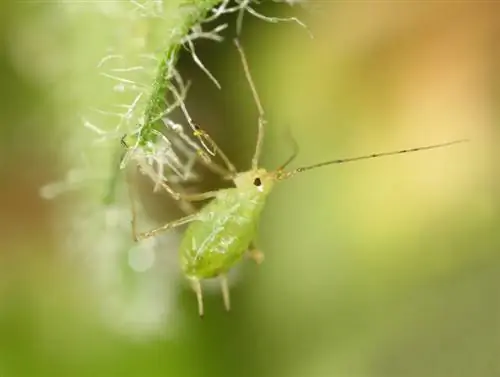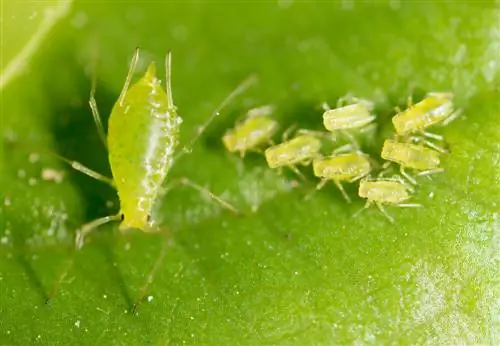- Author admin [email protected].
- Public 2023-12-16 16:46.
- Last modified 2025-01-23 11:20.
Deadnettle, especially the red deadnettle, tend to spread uncontrollably in the garden. So if you don't want to just care for dead nettles everywhere, you have to prevent the ornamental plant from multiplying too much. This is easier said than done. Tips for combating dead nettles.

How to fight dead nettles in the garden?
To effectively combat dead nettles, you should pull out unwanted plants before they bloom, loosen the soil, work it with a rake, remove all root particles and, if necessary, use biological weed killers. A root barrier can contain the spread.
Stop the spread of deadnettle
In order to keep deadnettle in its place in the garden, you first need to know how deadnettle reproduces.
Propagation occurs via seeds and underground runners.
Ants do their part to ensure that the fruits reach all corners of the garden. If you have a lot of ants in your garden, you don't have much choice but to fight them too.
Manual work is required to combat dead nettles
- Pull up deadnettle before flowering
- Loose the soil
- Working the soil with a rake
- Remove even the smallest root particles
Deadnettles that grow in undesirable places should definitely be pulled out before they bloom. Once seeds have formed, you can hardly stop the deadnettle from spreading.
Before planting beds where dead nettles have grown, loosen the soil. Go through with a rake to pull out the underground runners.
Make sure that the roots break as little as possible when fighting. All underground parts can sprout again without any problems.
Use biological weed killers
If you can't control the plague at all, your only option is to use biological weed killers (€23.00 on Amazon), such as those offered by the Neudorff company.
How to prevent
Deadnettles are a must in natural gardens. They thrive in shady places and are therefore unbeatable as ground cover under bushes and trees.
If you plant dead nettles, first create a root barrier that should be at least 20 centimeters deep in the ground.
Disrupt ant trails and immediately pull out all dead nettles outside the desired location.
Tips & Tricks
Deadnettle primarily attracts bumblebees, which belong to the bee family. In contrast to honey bees, bumblebees can penetrate flowers with their long proboscis. Dead nettles are therefore also called “bee sucks”.






